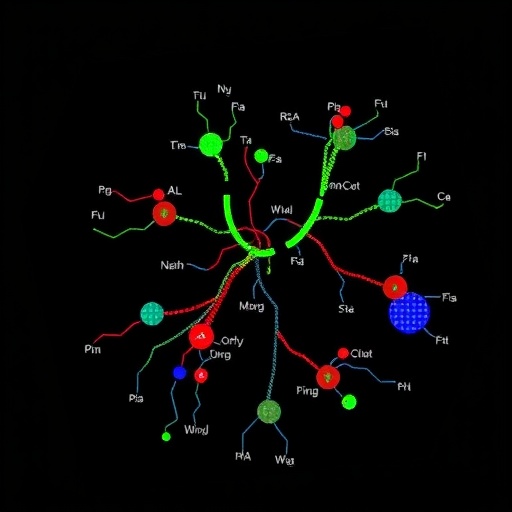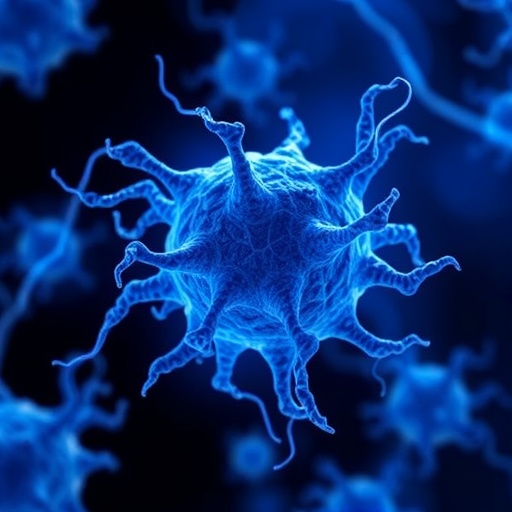In a groundbreaking study that promises to reshape our understanding of prostate cancer biology, researchers from the Arc Institute, UCSF, and the Fred Hutchinson Cancer Center have unveiled an unexpected key regulator of the androgen receptor (AR) — PTGES3, a protein formerly pigeonholed as a mere prostaglandin E synthase enzyme. Published recently in Nature Genetics, this transformative work leverages genome-wide CRISPR screening technology to expose PTGES3’s novel and crucial role in modulating AR function, opening promising new avenues for therapeutic intervention in aggressive prostate cancers resistant to existing hormone therapies.
The androgen receptor is a pivotal transcription factor governing prostate cell development and homeostasis. In prostate cancer, the AR pathway is notoriously hijacked to fuel tumor progression, making it a focal target for hormone-based treatment strategies. The research team innovated by engineering a fluorescent AR-tagged prostate cancer cell model that enabled real-time quantitative tracking of AR protein levels. This advancement, combined with high-throughput CRISPR-Cas9 gene editing, allowed the systematic interrogation of virtually every gene to discern its influence on AR stability and function.
Through these comprehensive CRISPR loss-of-function screens, the researchers identified known AR regulators such as HOXB13 and GATA2, validating their approach. More intriguingly, they pinpointed PTGES3 as a novel and unexpected AR modulator. This discovery challenged preconceived notions about PTGES3’s function; unlike its prostaglandin synthase relatives, PTGES3’s impact on AR appeared independent of enzymatic activity, defying its traditional classification and suggesting a dual role beyond prostaglandin biosynthesis.
Further patient data analysis revealed a striking correlation: elevated PTGES3 expression portends poorer outcomes in patients undergoing hormone therapy for prostate cancer. This clinical association underscores PTGES3’s potential as a biomarker for treatment resistance. Complementing the clinical data, in vivo murine studies demonstrated that PTGES3 suppression resulted in diminished AR levels and significantly slowed tumor growth, substantiating its role in cancer proliferation and vividly illustrating its promise as a therapeutic target.
At the molecular level, PTGES3 exerts its influence through two distinct mechanisms. Firstly, it acts as a co-chaperone within the cytoplasm to stabilize the AR protein, preventing its degradation and ensuring the receptor remains available to mediate downstream signaling. Secondly, PTGES3 functions as a nuclear co-factor, facilitating AR’s binding to genomic DNA and subsequent activation of gene expression programs critical for tumor cell survival and proliferation. This bifunctional role of PTGES3 intricately ties it to the very core of AR-driven oncogenesis.
This discovery not only advances the fundamental understanding of AR regulation but also proposes a paradigm shift in targeting transcription factors therapeutically. Traditionally, efforts have concentrated on disrupting DNA-binding domains or transcriptional activation regions of such factors. PTGES3’s regulation of AR protein stability and DNA-binding capability highlights an underexplored yet potentially more druggable axis, ushering in innovative strategies that might overcome current treatment limitations by destabilizing AR at the protein level.
The study’s senior author, Luke Gilbert, emphasizes the power of unbiased CRISPR screens in unraveling hidden functional layers of well-studied proteins. This systematic, large-scale approach transcended conventional expectations, revealing PTGES3’s non-enzymatic roles and thereby advancing our molecular understanding of prostate cancer progression. Moreover, the first author, Haolong Li, envisions that their findings could become a blueprint for investigating other transcription factors implicated across various hormone-driven malignancies, broadening the impact of their research beyond prostate cancer alone.
Looking ahead, the research team is deeply engaged in elucidating the precise structural interface through which PTGES3 interacts with the androgen receptor. Understanding this molecular interplay holds the key to designing targeted therapeutics that could disrupt these interactions, potentially employing emerging protein degradation technologies such as PROTACs (proteolysis-targeting chimeras), which have shown remarkable efficacy in clinical trials for other protein targets.
Importantly, this work honors the legacy of Felix Feng, a distinguished UCSF researcher and one of the study’s co-senior authors, who passed away last December. His visionary leadership in prostate cancer biology continues to inspire the team’s trailblazing efforts to develop novel, more effective treatments for patients afflicted with aggressive and treatment-resistant forms of the disease.
The investigators also highlight that regulatory factors like PTGES3, which mediate transcription factor stability rather than DNA binding or transcription activation directly, represent a strategic yet underutilized class of targets. By harnessing insights into this less-explored regulatory layer, future therapies may achieve enhanced specificity and efficacy, especially in cancers where aberrant transcription factor activity fuels malignancy.
This discovery ushers in a hopeful horizon for prostate cancer patients confronting the formidable challenge of therapy resistance. By targeting PTGES3, it may be possible not only to disrupt the AR signaling axis more effectively but also to circumvent the common escape mechanisms that tumors deploy against conventional hormone therapies, ushering in a new era of precision oncology.
Research funding for this transformative project was provided by prominent institutions including the National Institutes of Health, the Prostate Cancer Foundation, the Department of Defense Prostate Cancer Research Program, the Howard Hughes Medical Institute, the Swedish Research Council, the UCSF Benioff Initiative for Prostate Cancer Research, and the Arc Institute. The authors have also filed patent applications centered on targeting PTGES3, signaling ongoing efforts to translate these insights into clinical applications.
This pioneering study exemplifies the convergence of innovative genetic technologies, clinical data integration, and in vivo experimental validation, illustrating how systematic, unbiased approaches can redefine our understanding of complex diseases. PTGES3, once a poorly understood protein, now emerges as a stalwart guardian of AR function and a beacon for novel therapeutic development against aggressive prostate cancer.
Subject of Research: Animals
Article Title: Genome-wide CRISPR screens identify PTGES3 as a novel AR modulator
News Publication Date: 5-Nov-2025
Web References: https://www.nature.com/articles/s41588-025-02388-8
References: Li, H., Melnyk, J. E., Fu, B. X. H., Shrestha, R., Zhang, M., Sjöström, M., Feng, S., Anderson, J. A., Han, W., Chesner, L. N., Shin, H. J., Farsh, T., Suarez, H. J., Nath, S., Chou, J., Das, R., Egusa, E. A., Zhu, J., Winters, A., Maheshwari, A., Hua, J. T., Alshalalfa, M., Chen, W. S., Calvert, M., Davicioni, E., Kishishita, A., Barpanda, A., Liu, T., Wiita, A. P., Stohr, B. A., Siddiqui, J., Huang, B., Small, E. J., Shokat, K. M., Nelson, P., Quigley, D. A., Wasmuth, E. V., Gilbert, L. A., & Feng, F. Y. (2025). Genome-wide CRISPR screens identify PTGES3 as a novel AR modulator. Nature Genetics. DOI: 10.1038/s41588-025-02388-8
Image Credits: Li et al.
Keywords: Prostate cancer, Cancer, Endocrinology, Hormone signaling
Tags: androgen receptor function modulationAR-tagged prostate cancer cell modelCRISPR screening technology in cancer researchgenome-wide CRISPR loss-of-function screenshigh-throughput gene editing in cancerhormone resistance in prostate cancer treatmentsinnovative cancer research methodologiesnovel regulators of androgen receptorprostate cancer biology advancementsPTGES3 protein role in prostate cancertherapeutic interventions for aggressive prostate cancertranscription factors in prostate cell development





